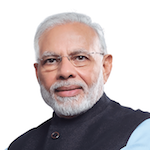
Not too much was expected from the justconcluded India-US strategic dialogue and not too much has resulted. Its importance lay in resuming and creating a congenial atmosphere for high level engagement after several US steps roiling India on the diplomatic, economic and trade fronts.
To signal that the US was ready to engage the Modi government unreservedly, Kerry has tried to woo Shri Modi unselfconsciously by quoting his slogan of “sabke sath sabka vikas” approvingly more than once so as to disarm any personal rancour that they suspect may linger over the visa denial issue. Our external affairs minister has qualified her discussions with Kerry “excellent” though this is not reflected in the announced outcomes.
She said astutely that the relationship is a truly defining partnership and a strategic one “to the extent” it takes care of our respective regional interests and contributes to security in our neighbourhood. Both sides “stand at a turning point”, she said and referred to the “latent potential” of the relationship -again phrases chosen with care.
She spoke of scheduling the Ministerial Trade Policy Forum and other dialogue mechanisms to address outstanding trade and economic issues “that arise as a natural result of different perceptions” -again striking a note of realism. She implicitly called US snooping of India as an unfriendly act and “un acceptable”. This needed to be said frankly, as such snooping is a serious diplomatic breach, and had the US been the victim, its reaction would have been severe in reprisals.
Kerry focused on the US agenda “to boost two-way trade, to support South Asia’s connectivity , to develop cleaner energy , to deepen our security partnership in the Asia Pacific and beyond.” How US can help South Asian connectivity and why the security partnership excludes South Asian security is not clear. He acknowledged realistically that “we all have a lot of homework to do coming out of this meeting”.
He speaks of specifics that could be put on the table for Shri Modi’s visit to Washington, but which? The US economic interests identified by him are in high-end manufacturing, infrastructure, healthcare and information technology . The first would mean technology transfers and India’s absorption capacities; US companies are hardly likely to build highways, airports, ports, railways etc in India.
In the IT sector visa issues and movement of professionals remain. Kerry wants removal of obstacles such as “tariffs, or price controls, or preferential treatment for certain products”, issues on which no quick progress can be made. On Climate Change issues, the US is pressing India to accept legally binding commitments to reduce carbon emissions in order to create business opportunities in India for US technologies.
While supporting Shri Modi’s focus on solar energy , Kerry has said elsewhere that India should become part of global supply chains and not impose local manufacturing, which India seeks in the solar energy sector and for which we have been dragged to the WTO. The joint statement lists the areas of engagement, without breaking any new ground.
It refers to India joining the export control organisations “in a phased manner”, which implies a delay in the process. On civil nuclear cooperation the joint statement, in deference to US sensitivities, is worded more positively than the situation warrants.
The reference to India, the United States and Japan working together to build transport and trade connectivity , including by developing economic corridors” to our east is significant geopolitically . On Afghanistan, Iraq and Gaza, a language of the lowest denominator has been found. All in all, the best we could say about the India-US strategic dialogue is: Kerry on.





Be the first to comment